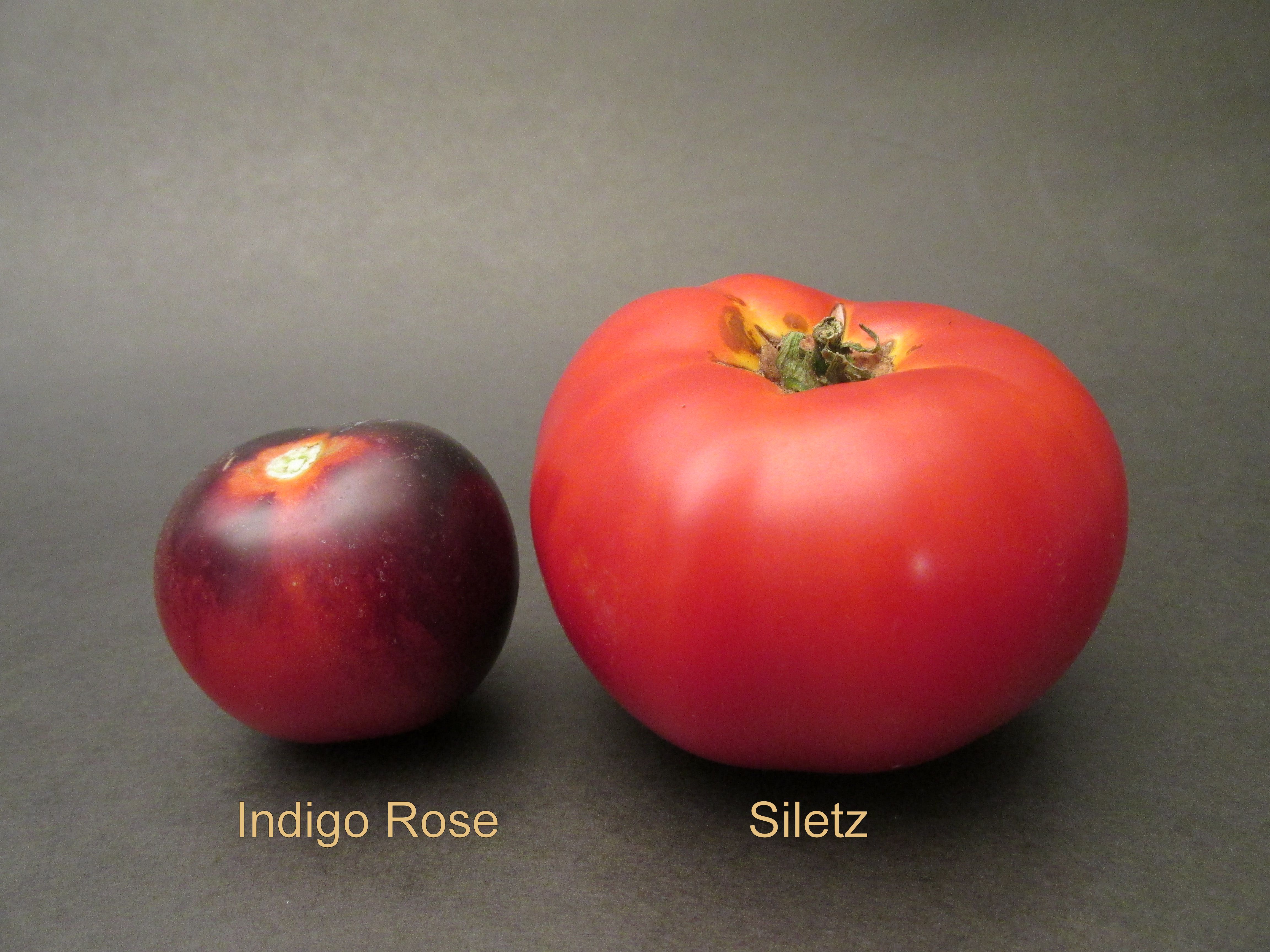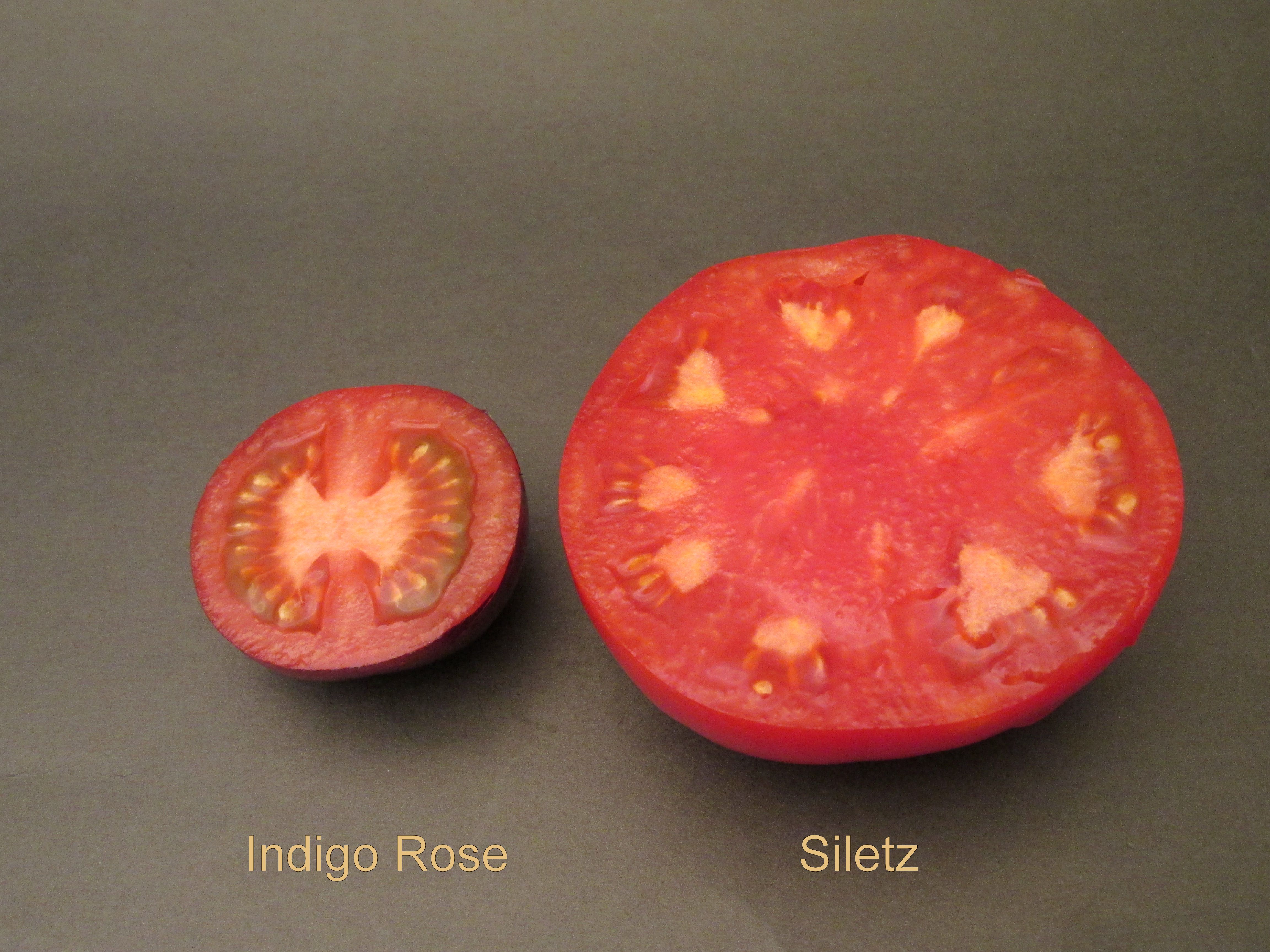Indigo Rose
| Denomination: | 'Indigo Rose' |
|---|---|
| Botanical Name: | Solanum lycopersicum |
| Applicant/Holder: |
Oregon State University Office of Commercialization and Corporate Development 312 Kerr Administration Building Corvallis, Oregon 97331-2140 United States of America |
| Breeder: |
Berry Treat, Oregon State University, Corvallis, United States of America |
| Agent in Canada: |
Global Agri Services Inc. 376 New Maryland Highway New Maryland, New Brunswick E3C 1E5 Canada Tel: 506-462-9493 |
| Application Date: | 2014-02-03(priority claimed) |
| Application Number: | 14-8188 |
| Protective direction granted: | 2014-02-03 |
| Protective direction withdrawn: | 2014-04-14 |
| Grant of Rights Date: | 2016-10-31 |
| Certificate Number: | 5363 |
| Exemption from compulsory licensing: | Yes |
| Expiry date for exemption from compulsory licensing: | 2018-10-31 |
| Grant of Rights Termination Date: | 2036-10-31 |
Variety Description
Variety used for comparison: 'Siletz'
Summary: The plant growth type of 'Indigo Rose' is indeterminate whereas it is determinate for 'Siletz'. The immature fruit of 'Indigo Rose' has no green shoulder whereas that of 'Siletz' has a medium to large sized, medium green shoulder. The fruit of 'Indigo Rose' is small to medium sized and circular in shape whereas the fruit of 'Siletz' is large and slightly flattened in shape. At maturity, the fruit of 'Indigo Rose' has black and red skin and contains only two locules whereas the fruit of 'Siletz' has red skin and contains more than six locules.
Description:
SEEDLING: anthocyanin colouration of hypocotyls present
PLANT: indeterminate growth habit, weak to medium intensity of anthocyanin colouration on upper third of stem, mid to late season maturity
LEAF: horizontal to semi-drooping attitude, bipinnate division of blade, dark green on upper side, medium glossiness on upper side, weak blistering with small to medium sized blisters
LEAFLET: large, horizontal to semi-erect attitude of petiolule in relation to main axis of leaf
INFLORESCENCE: mainly uniparous type
FLORET: no fasciation of first floret of inflorescence, no pubescence of style, yellow
PEDUNCLE: abscission layer present, medium length
IMMATURE FRUIT: green shoulder and green stripes absent, medium green skin
MATURE FRUIT: small to medium size, very small length/diameter ratio, circular shape in longitudinal section, weak ribbing at peduncle end, round cross-section, weak depression at peduncle end, small to medium sized peduncle scar, very small blossom scar, flat at blossom end, small mid-point of core (in cross-section) in relation to total diameter when viewed from above, medium thickness of pericarp, only two locules, black and red skin at maturity, medium to strong glossiness of skin, red flesh, colourless epidermis, firm, long shelf-life
Origin & Breeding History: 'Indigo Rose' originated from a four way controlled cross conducted at Oregon State University in Corvallis, Oregon, USA using accessions containing wild species germplasm. The first pair of crosses were made in the spring of 2002 with the resulting F1 produced during the summer of 2002. The F2 populations were germinated and grown out in the spring of 2003. Two lines, 02-021-8-12 and 02-126-3-3, were selected for intense anthocyanin expression in the fruit in the F3 during the summer of 2003. In the fall, these F4 lines were crossed to produce the population from which 'Indigo Rose' was selected. The F1 was produced in the spring and the F2 during the summer of 2004. Individual plants strongly expressing anthocyanin colouration were advanced from the F2 by single plant selection to the F6 in 2006. Beginning in the F6, 'Indigo Rose' was massed and advanced to the F9 generations as of 2010.
Tests & Trials: The comparative trials for 'Indigo Rose' were conducted during the 2014 and 2015 growing seasons in New Maryland, New Brunswick. In each year of test, the seeds were started indoors, transplanted into 10 cm pots and grown on in the greenhouse until risk of frost had passed, and later planted outdoors in early June. Each plot consisted of 20 plants each of the candidate and reference variety grown in a single row. Plants were spaced 0.60 metres apart within the row and spaced 0.75 metres between rows.
Click on image for larger view

Tomato: 'Indigo Rose' (left) with reference variety 'Siletz' (right)
Click on image for larger view

Tomato: 'Indigo Rose' (left) with reference variety 'Siletz' (right)
- Date modified: